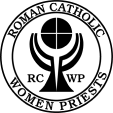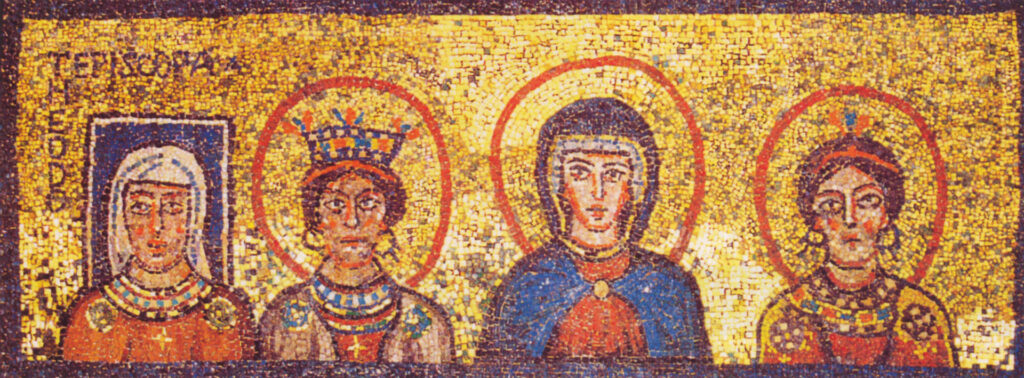Midwest Region
Mosaic History
About the Mosaic
A mosaic of four women ministers rests above a portal into a side chapel of the Church of St. Praxedis in Rome, near the main train station. This mosaic is similar to the row of portraits some churches display of their pastors over the years.
The Virgin Mary
The Virgin Mary, wearing a blue mantle, is in the middle. On her left is Pudentiana, related to the Pudens of Romans and the same Pudens of 2 Timothy 4:21. It is commonly accepted that the properties where the Church of St. Pudentiana, and farther on, the Church of St. Praxedis, now stand, were owned by a woman named Pudens and that, as the era of house churches ended as the era of actual church structures, her family property later became church property. Under the church of St. Pudentiana, excavations revealed that a public bath was constructed adjoining the family’s dwelling. This would have allowed numbers of people to enter the baths and pass through into the houses where people gathered for worship as “house church” to avoid arousing suspicion of Christian gathering taking place. The baths could also have doubled as immersion baptismal pools.

St. Praxedis
St. Praxedis is on Mary’s right, in the mosaic shown wearing a jeweled crown. She has a Greek name rather than a feminine version of Pudens, so she was probably a slave rather than a biological descendant. Many Romans bought Greek slaves to teach their children to speak Greek. A girl slave would teach a daughter.

Theodora & Praxedis
Theodora, about 820 A.D. and Praxedis, about seven hundred years earlier, stand shoulder to shoulder, the living and the departed, both wear their Episcopal crosses, indicating their status as bishops. They attest to a conscious succession in church office from Mary, through Praxedis and Pudentiana, to Theodora, who, at the time of her
portrait, was bishop of the titular church of St. Praxedis. Rome has traditionally not one but many bishops, stemming from its numerous early house churches. This tradition is continued by the cardinals, who are bishops; each of them is named to one of the churches. The church of St. Praxedis still has a cardinal/bishop.

From Dr. Dorothy Irvin’s, “The Archaeology of Women’s Traditional Ministries in the Church.”
Dorothy Irvin, S.T.D. earned a pontifical doctorate in Catholic theology from the University of Tuebingen, Germany. She specialized in the Bible, ancient Near Eastern studies, and archaeology, taught theology at several Catholic universities, and published several books and articles.

